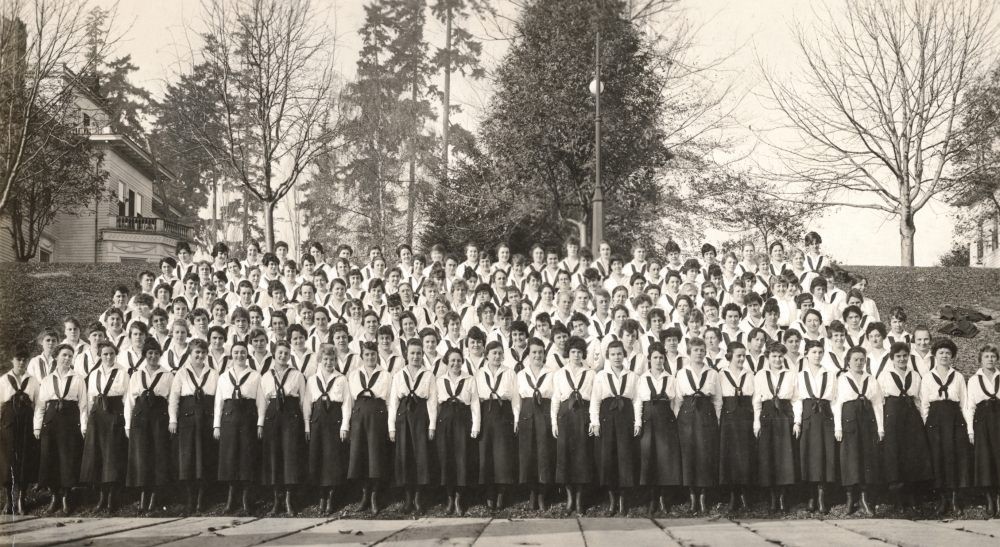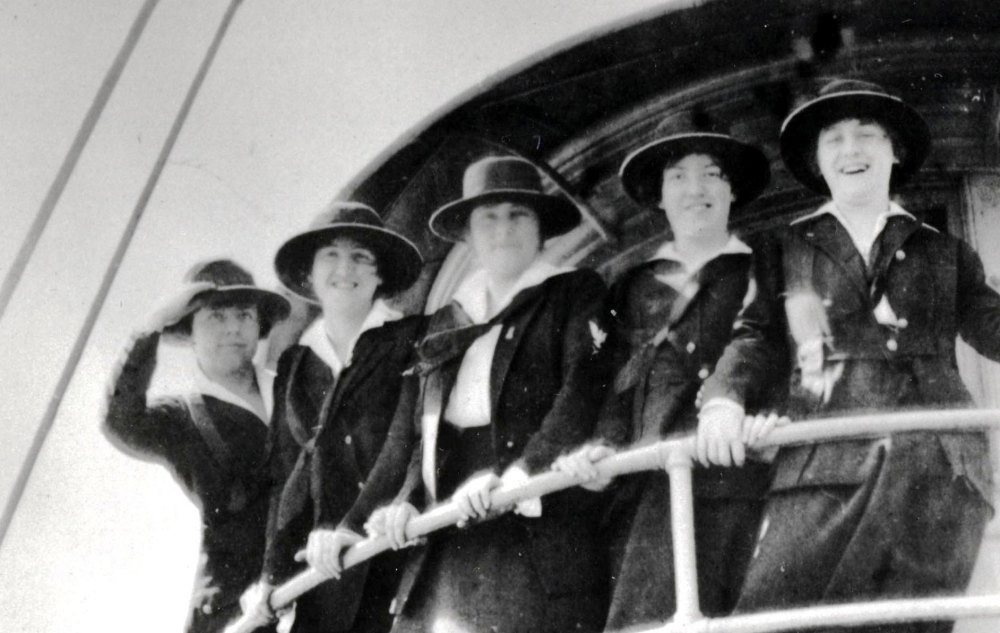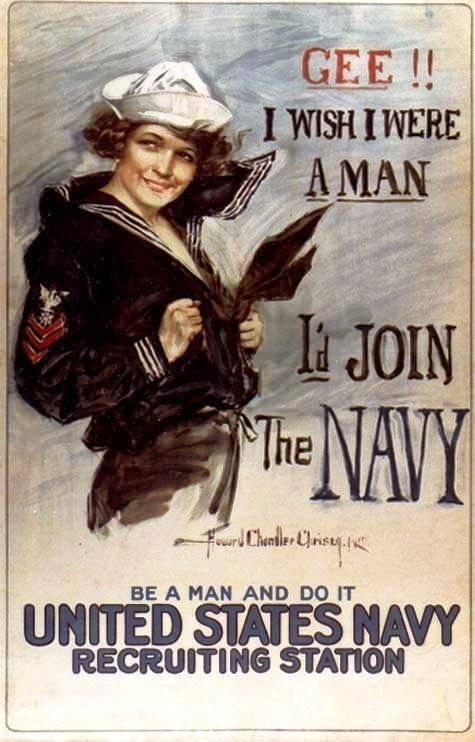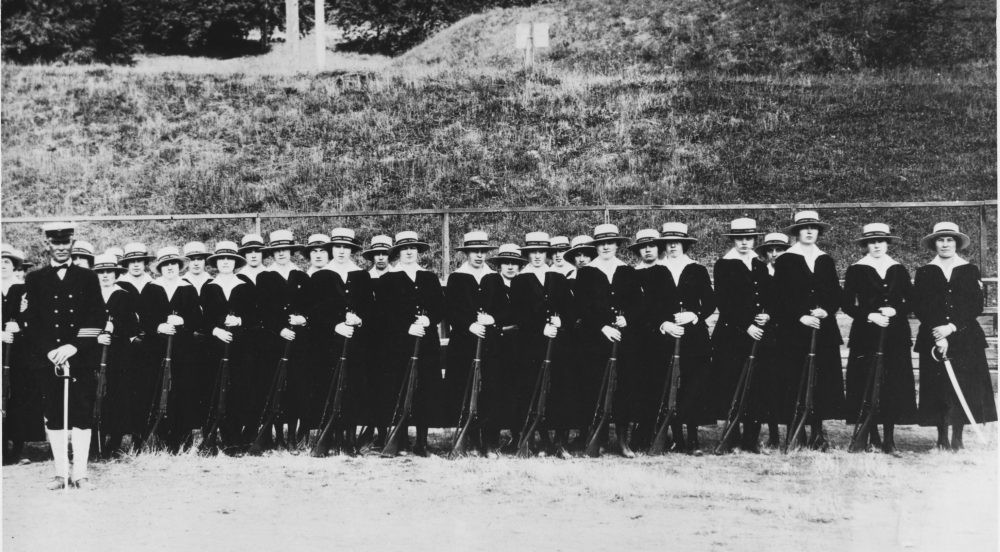Petticoats in the Navy: Yeomanettes
"Petticoats in the Navy! Damn'd outrage! Helluva mess! Back to sea f'r me !" - Naval lawyer who feared women would soon be assigned to his office.
"There's one thing certain and that's the spirit of the American women - if you men can't lick the Kaiser we women will." - Yeomanette stationed at the Shipyard in "Adventures of the First Co. of Yeomanettes: Summer of 1918" .
In order to fill severe clerical shortages caused by the war, the U.S. Navy approved the enlistment of women in 1917. The Naval Reserve Act of 1916 made no specific gender requirements for yeomen - enlisted personal who fulfill administrative and clerical duties. Thus, these newly enlisted women were given the rating Yeoman (F), with the "F" designating female. More popularly referred to as Yeomanettes, the majority worked in clerical positions, but they also served as translators, draftsmen, fingerprint experts, ship camouflage designers and recruiting agents.
End of the War: Return to Tradition
At the end of the war, Yeomen (F) were released from active duty. Most Americans had considered the use of female employees and female recruits to be a necessary but temporary wartime measure. Women were fulfilling their patriotic duty by releasing desk-bound men for combat, but they were expected to return to more traditional roles when the men came home. Women would disappear from enlisted service until the next world war.
Of the 11,275 Yeomanettes who served during World War I, more than 200 were stationed at the Shipyard.
Gertrude McGowan Madden (pictured second from the right) enlisted herself as a Yeoman (F) when she turned 18. During the war, she worked as a secretary to the Chief Draftsman. You can see Madden's Yeomanette uniform on display at the Puget Sound Navy Museum in A Heritage of Excellence. Here she is pictured with fellow Yeomanettes Jo Oass, Genevieve Wolfe, Mabel Evans, and Alta Seebree.
Like many of the Yeomanettes, Oass and Wolfe continued their employment at the Shipyard after the war as Civil Service.
Women played an essential role in recruitment during World Wars I and II, acting as both recruitment agents and advertising subjects. Although this WWI recruitment poster was aimed at increasing male enlistment, Bernice Smith Tongate, the subject of this advertisement, enlisted herself as a Yeoman (F) just 10 days after posing for the artist. She served in both world wars and died at the age of 92 in Kitsap County.
"Everybody was wild about how well the girls did and how easily they handled their guns - 'Just as well as the boys did, every bit as well' - was the word." - Yeomanette stationed at the Shipyard in "Adventures of the First Co. of Yeomanettes: Summer of 1918"






